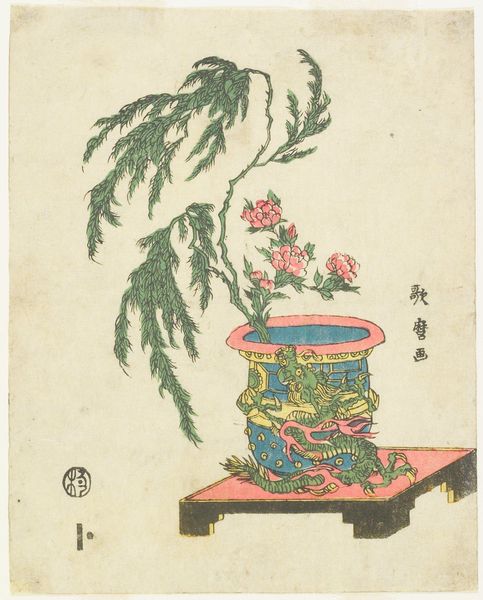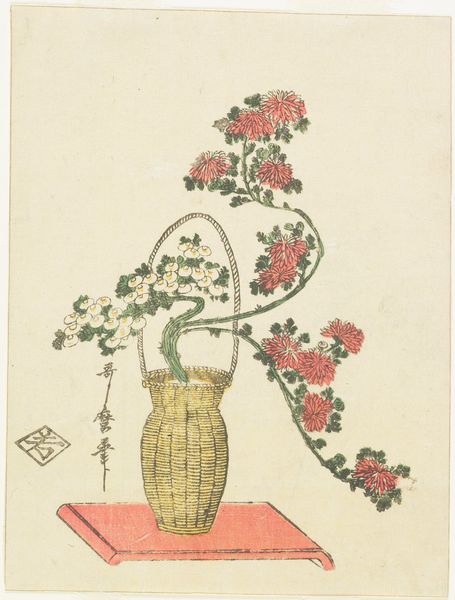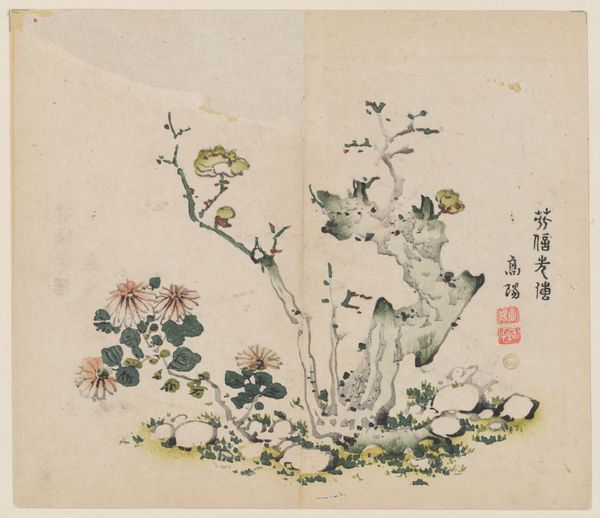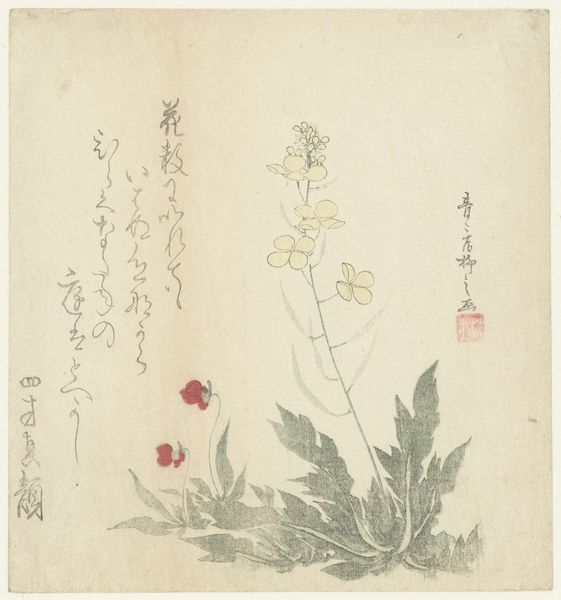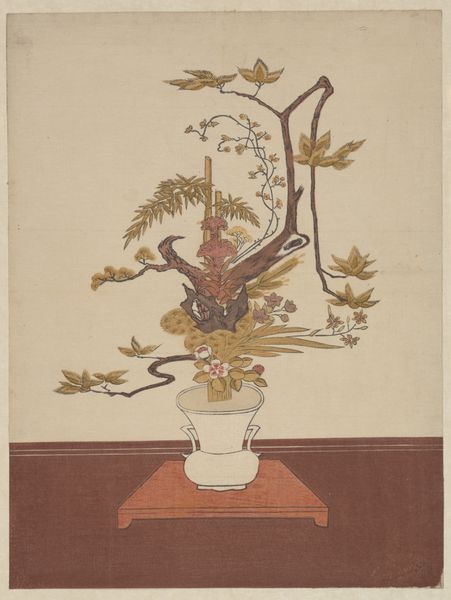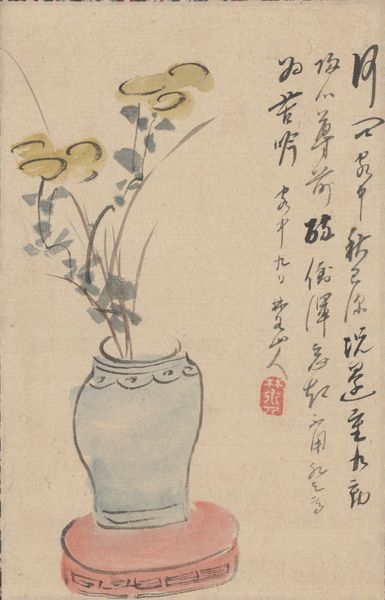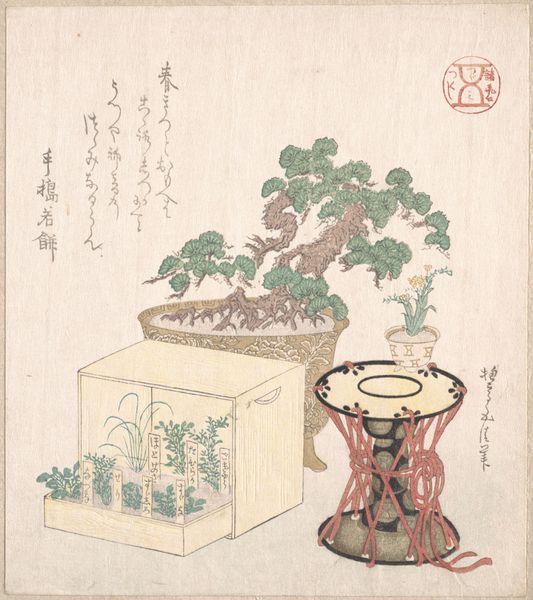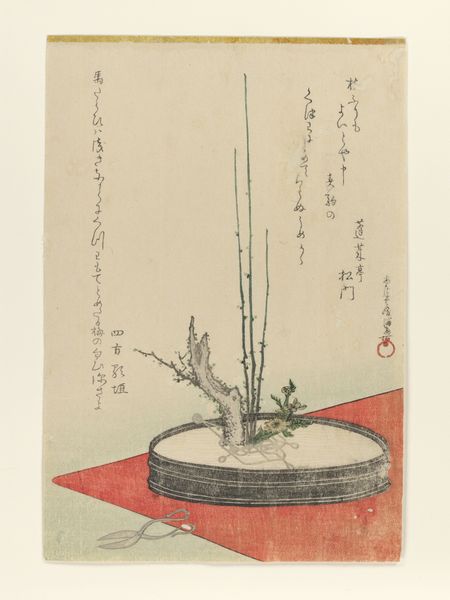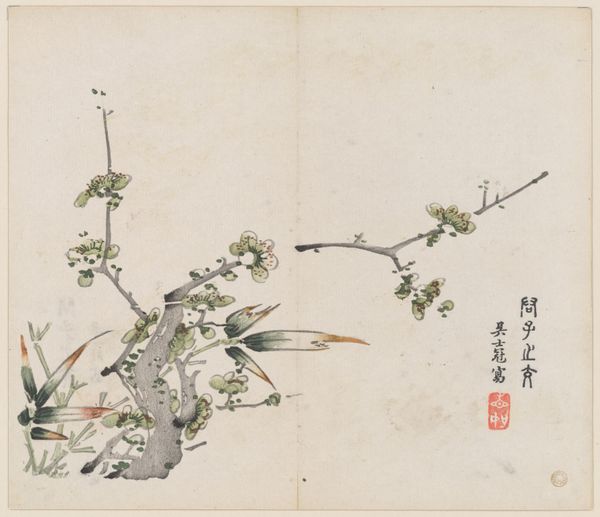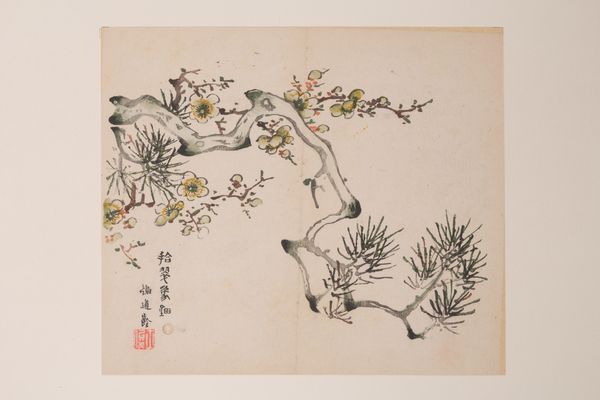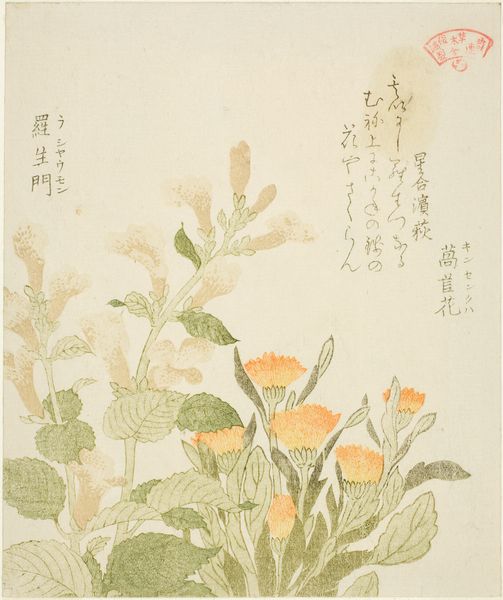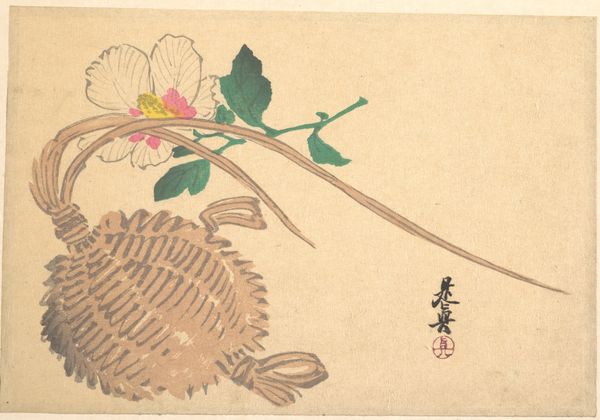
# print
#
asian-art
#
ukiyo-e
Dimensions: 23.3 × 17.7 cm (9 3/16 × 6 15/16 in.)
Copyright: Public Domain
Utagawa Toyohiro created this image of an ikebana arrangement sometime between the late 18th and early 19th centuries. “Three Friends” depicts pine, bamboo, and plum blossoms in a bronze vase. These plants are often used symbolically, representing steadfastness, resilience, and renewal. During Toyohiro’s time, Japan was undergoing social and economic shifts. The merchant class was gaining influence, leading to new forms of cultural expression like ukiyo-e prints, of which this is one. Ukiyo-e prints often depicted scenes of everyday life, including flower arrangements like this one. But ikebana wasn’t just about aesthetics; it was deeply entwined with social status and gender. While the practice was largely reserved for the upper classes, and often performed by men, women also found ways to participate. They used flower arrangements to communicate unspoken sentiments. In a society governed by strict social norms, this offered a subtle form of expression. The “Three Friends” is not just a pretty picture; it's a window into a world where art, nature, and identity intertwine.
Comments
No comments
Be the first to comment and join the conversation on the ultimate creative platform.
